19.4 Nucleophilic Addition Reactions of Aldehydes and Ketones
As we saw in the Preview of Carbonyl Chemistry, the most general reaction of aldehydes and ketones is the nucleophilic addition reaction. As shown in Figure 19.2, a nucleophile, :Nu–, approaches the carbonyl group from an angle of about 105° opposite the carbonyl oxygen and forms a bond to the electrophilic C–O carbon atom. At the same time, rehybridization of the carbonyl carbon from sp2 to sp3 occurs, an electron pair from the C═O bond moves toward the electronegative oxygen atom, and a tetrahedral alkoxide ion intermediate is produced. Protonation of the alkoxide by addition of acid then gives an alcohol.
Figure 19.2 MECHANISM
A nucleophilic addition reaction to an aldehyde or ketone. The nucleophile approaches the carbonyl group from an angle of approximately 75° to the plane of the sp2 orbitals, the carbonyl carbon rehybridizes from sp2 to sp3, and an alkoxide ion is formed. Protonation by addition of acid then gives an alcohol.
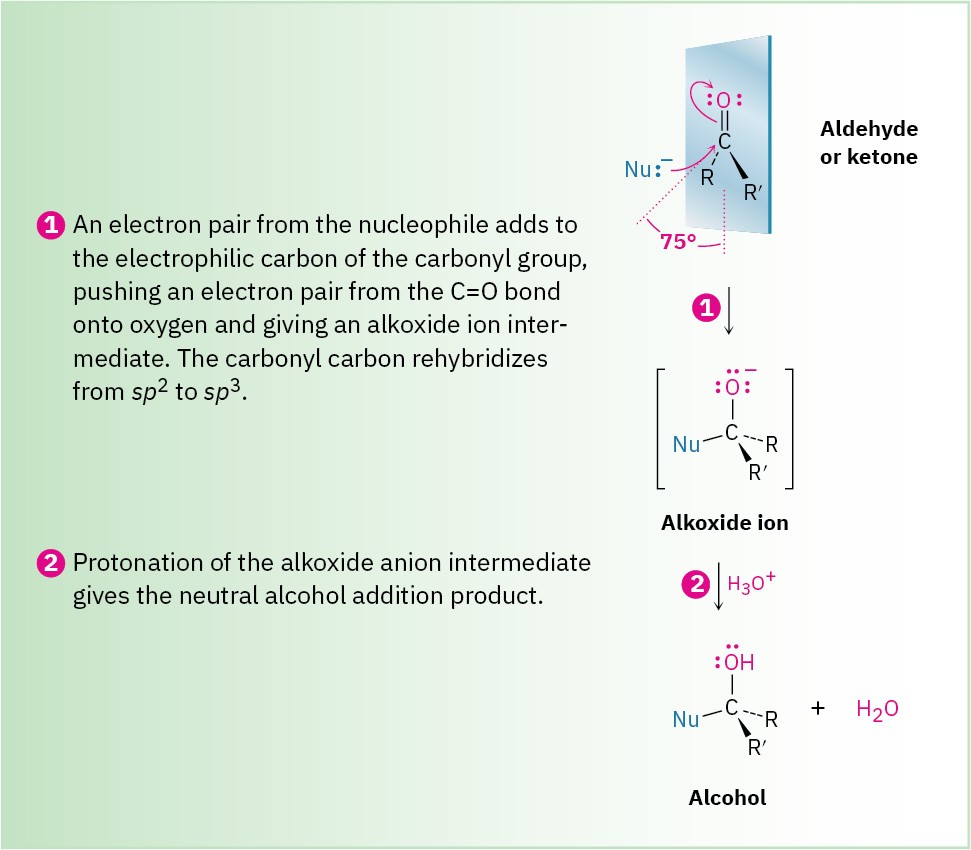
The nucleophile can be either negatively charged (:Nu–) or neutral (:Nu). If it’s neutral, however, it usually carries a hydrogen atom that can subsequently be eliminated, :Nu–H. For example:
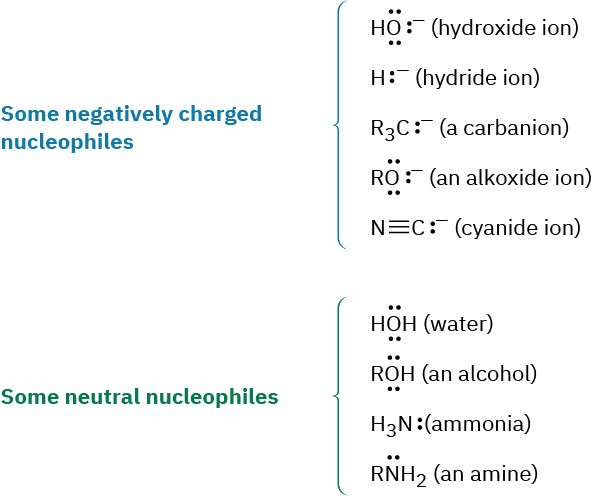
Nucleophilic additions to aldehydes and ketones have two general variations, as shown in Figure 19.3. In one variation, the tetrahedral intermediate is protonated by water or acid to give an alcohol as the final product. In the second variation, the carbonyl oxygen atom is protonated and then eliminated as HO– or H2O to give a product with a C═Nu double bond.
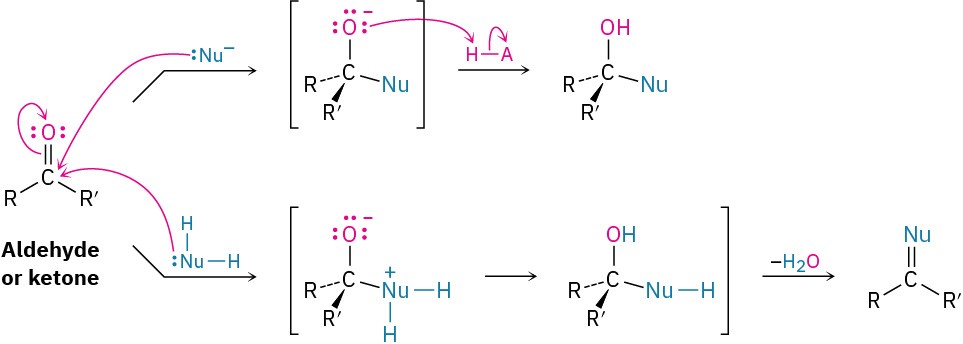
Figure 19.3 Two general reaction pathways following addition of a nucleophile to an aldehyde or ketone. The top pathway leads to an alcohol product; the bottom pathway leads to a product with a C═Nu double bond.
Aldehydes are generally more reactive than ketones in nucleophilic addition reactions for both steric and electronic reasons. Sterically, the presence of only one large substituent bonded to the C═O carbon in an aldehyde versus two large substituents in a ketone means that a nucleophile is able to approach an aldehyde more readily. Thus, the transition state leading to the tetrahedral intermediate is less crowded and lower in energy for an aldehyde than for a ketone (Figure 19.4).
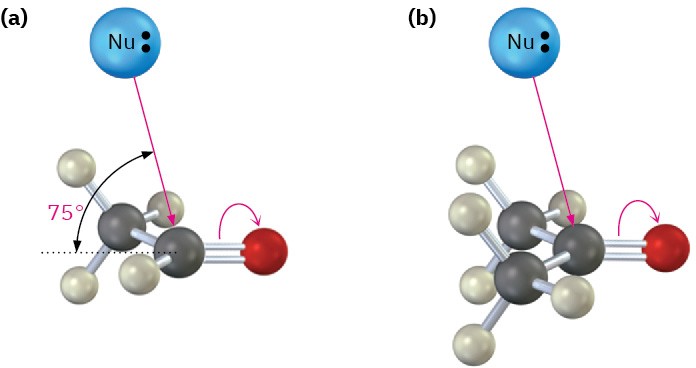
Figure 19.4 Steric hindrance in nucleophilic addition reactions. (a) Nucleophilic addition to an aldehyde is sterically less hindered because only one relatively large substituent is attached to the carbonyl-group carbon. (b) A ketone, however, has two large substituents and is more hindered. The approach of the nucleophile is along the C═O bond at an angle of about 75° to the plane of the carbon sp2 orbitals.
Electronically, aldehydes are more reactive than ketones because of the greater polarization of aldehyde carbonyl groups. To see this polarity difference, recall the stability order of carbocations (Section 7.9). A primary carbocation is higher in energy and thus more reactive than a secondary carbocation since it has only one alkyl group inductively stabilizing the positive charge rather than two. In the same way, an aldehyde has only one alkyl group inductively stabilizing the partial positive charge on the carbonyl carbon rather than two, and is a bit more electrophilic, and, therefore, more reactive than a ketone.
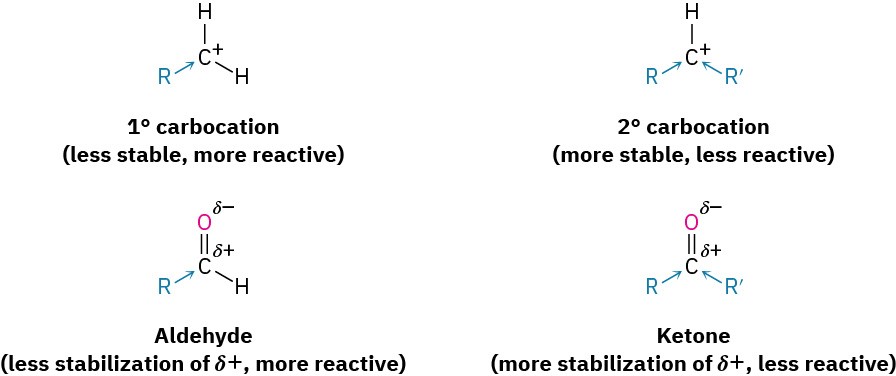
One further comparison: aromatic aldehydes, such as benzaldehyde, are less reactive in nucleophilic addition reactions than aliphatic aldehydes because the electron-donating resonance effect of the aromatic ring makes the carbonyl group less electrophilic.
Comparing electrostatic potential maps of formaldehyde and benzaldehyde, for example, shows that the carbonyl carbon atom is less positive (less blue) in the aromatic aldehyde.
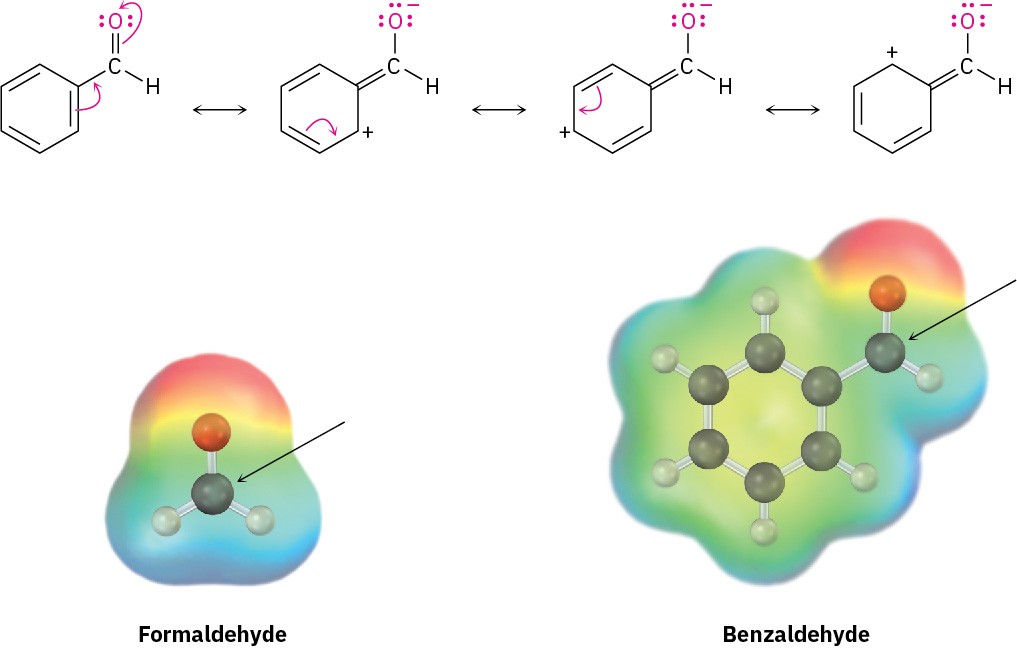
Problem 19-5
Treatment of an aldehyde or ketone with cyanide ion (−:C≡N), followed by protonation of the tetrahedral alkoxide ion intermediate, gives a cyanohydrin. Show the structure of the cyanohydrin obtained from cyclohexanone.
Problem 19-6
p-Nitrobenzaldehyde is more reactive toward nucleophilic additions than p– methoxybenzaldehyde. Explain.

